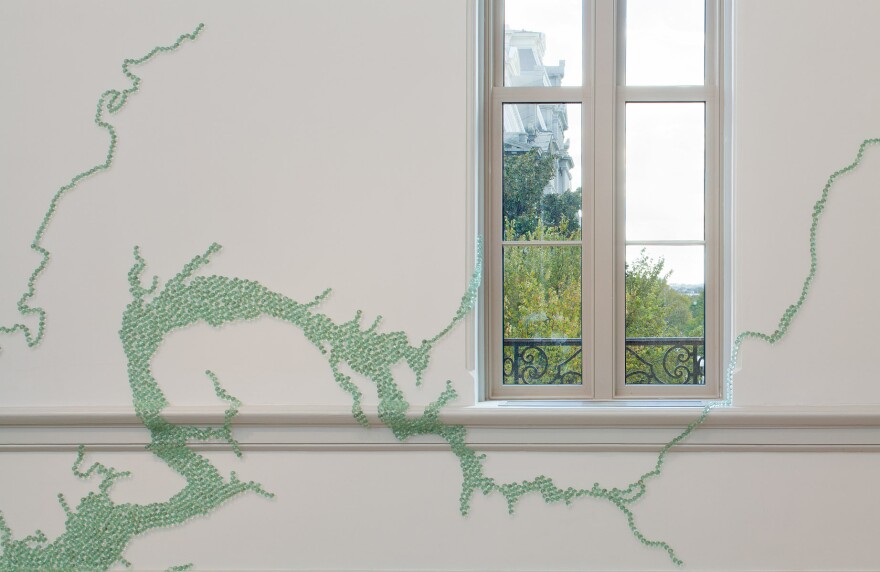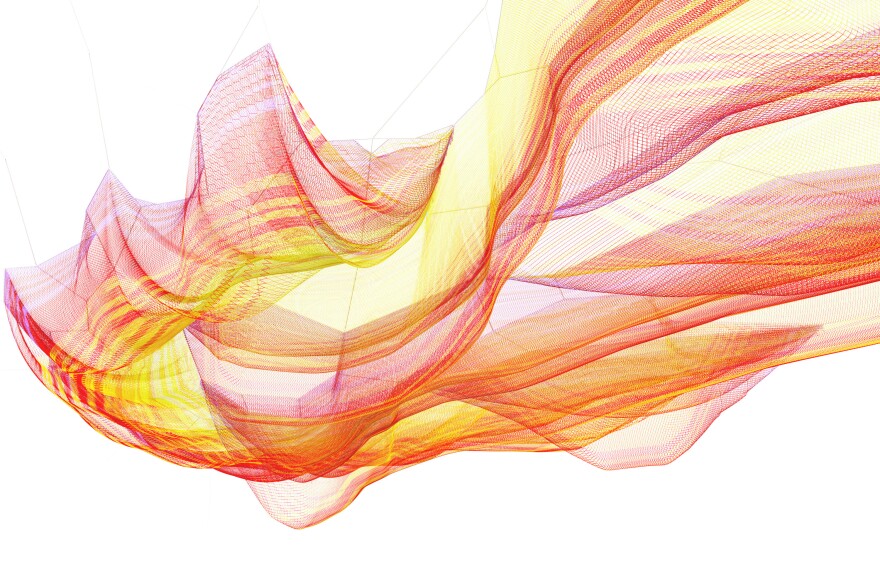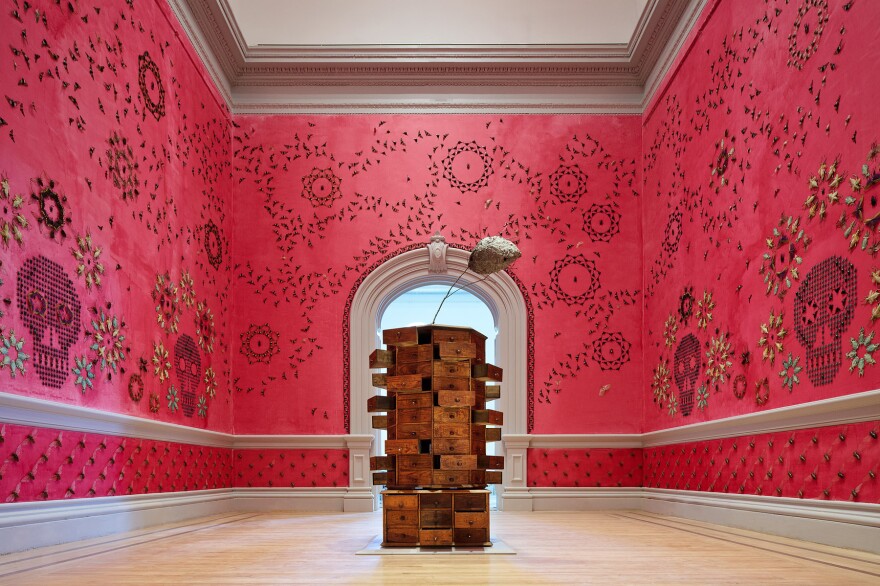When you were a little kid, everyday objects could be amazing — twigs, bugs, old tires, there was potential in everything. And it's that sense of awe that the Smithsonian's Renwick Gallery is trying to recapture in its new show, Wonder.
In the Renwick's newly renovated gallery in Washington, D.C., nine artists were each given free rein over a space to create inspiring installations. Tara Donovan used hundreds of thousands of index cards to create a mountain range. Gabriel Dawe made a rainbow out of some 60 miles of colored thread. Patrick Dougherty turned sticks into giant, swirling nests.

"I wanted people to be overwhelmed, to feel as if there's something in the world greater than yourself," says Renwick curator Nicholas Bell. He spent over a year reflecting on wonder — that feeling you get before mental clutter like "intellect" and "taste ... drown out the senses," as he puts it in the show's catalog.
The Renwick was closed for two years for renovations, and for its reopening, Bell looked for artists who would transform the building's spaces. Seattle-based artist John Grade told Bell he was going to "bring" him a tree. Bell wasn't entirely sure what Grade meant.

"I'm going to find a tree that is the same age as your building and I'm going to build it for you," Grade explained.
The Renwick was built more than 150 years ago, so Grade went to the Cascade Mountains and found a hemlock tree of a similar vintage and made a plaster cast of it.
"They rigged up ropes and they covered this whole tree with tin foil so that it would protect it, and they covered it with plaster," Bell says. "They popped these pieces of plaster off the tree and took them back to his studio. Then they used that as a mold. So they had hundreds of volunteers coming in off the street — people on their lunch hour, people coming in after work and on the weekend."
Those volunteers helped Grade rebuild the tree using a half a million small blocks of reclaimed wood from a bridge that was being torn down. At the Renwick Gallery, the tree is now suspended on its side, filling the entire room.

The natural world is where most of these artists found their wonders.
Maya Lin created what she calls a "jewel-like map of the Chesapeake Bay," using clear, blue-green marbles. "If you look at each marble they're not precious," says Lin. "They were very functionally made. They're cracked. They have flaws. But the color to me is probably the closest I can get to capturing the shimmer and glimmer of water."

To wonder is also to question, as in: I wonder what that's all about? For artist Janet Echelman, that meant trying to understand a natural disaster — the devastating tsunami that hit Japan in 2011. For the Renwick's grand salon, she created a massive, undulating net, suspended overhead from the 40-foot ceiling. Through a system of programmed lighting and wind movement, the net's colors and billowy shape change slowly, casting shadows on the walls. You almost feel like you're underwater.

Echelman was inspired by data from the National Oceanic and Atmospheric Administration. "It's the wave heights across the entire Pacific Ocean from the tsunami that hit Japan," she says. "And it's about these deeply held interconnections and interdependencies, some of which we understand and some of which we don't understand and can't predict. So it's my own personal way of making sense of the world."

In another room, artist Gabriel Dawe has created a kind of prism of two intersecting columns in a rainbow of color. At first glance, the structure looks like some kind of computer-generated hologram. But no, it's made entirely out of thread in more than 16 different colors. Dawe says his attraction to thread goes all the way back to his childhood in Mexico City — he was told that he could not embroider because he was a boy.
As Dawe was exploring the links between fashion and architecture, he thought: What if I do an architectural structure with the core material of clothing? Here, he says, he's "using the material of one in the scale of the other and creating some new type of structure that hasn't been done before."

That childhood sensation of being awestruck — the "wow" factor — is what Bell wants visitors to feel as they walk through "Wonder." And what better way to inspire "wow" than with exotic bugs?
Jennifer Angus created an elaborate, floor-to-ceiling pattern from grasshoppers, cicadas, moths, beetles and other insects. Yes, they are real, and yes, they are dead. Most of the bugs were farmed or caught wild in Southeast Asia. Some are nearly 10 inches long.
Angus has a background in textiles. As she was doing research on tribal dress in northern Thailand, she came across a shawl. "And on the shawl's fringe were strung green, metallic beetle wings — just the very same beetle wings that I have on the wall." says Angus. "I was really amazed. I had never thought of insects as beautiful beyond butterflies. But gradually I found that I was just more and more interested in them."
That's how it works. Great learning begins with wonder.

Wonder will be on view at the Renwick Gallery in Washington, D.C., until July 10, 2016.
Copyright 2021 NPR. To see more, visit https://www.npr.org.




